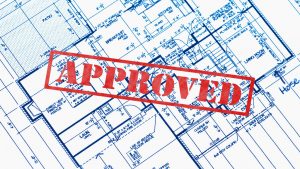The Canadian Chapter of the International Erosion Control Association (IECA) wasted little time in addressing a major concern of the construction industry after its formation in the fall of 2016.
One of its first actions was hiring the Canadian Standards Association (CSA) to produce a national standard which would provide greater consistency and effectiveness in the inspection and monitoring of erosion and sediment control on construction sites.
Published last fall, CSA/W202 – 18 – Erosion and Sediment Control: Inspection and Monitoring, “is the first of its kind in North America, and possibly the world,” says chapter president Glenn MacMillan.
“We want to get the word out to industry and regulators,” says MacMillan on the efforts the chapter, the CSA, and other industry players have been conducting to promote its existence.

The standard sets performance-based targets and is intended to shift a considerable amount of upfront planning review to more onsite monitoring, says MacMillan, noting that “it’s a compliance tool, not a how to do it document.”
In addition to its main provisions, the standard also provides requirements and recommendations for site inspection, material haulage, spill control and response plans, stormwater management facilities, and project sign-offs.
One of its key recommendations is that applicants for the position of qualified erosion and sediment control inspector have three years of on-the-job experience under a supervisor before actually assuming that position.
“You can’t just hire someone straight out of school.”
Feedback the chapter received from the construction industry shortly after its formation was the genesis for the standard.
One of the first things the chapter heard from the industry was the need for harmonization of what are basically guidelines and an emphasis on due diligence. Existing guidelines very greatly across the country, whether ones used by municipalities, conservation authorities, and provincial or federal departments, MacMillan says.
“When do we start (monitoring), how long does it take, and when does it end?” he says, citing some of industry’s complaints.
Input, advice, and recommendations were provided to the CSA by a specially created overall erosion and sediment control technical committee and a smaller erosion subcommittee. Both groups were comprised of “a balanced matrix” of contractors, consultants, and regulators from across the country.
“We couldn’t just have everyone from Ontario,” says MacMillan, noting the representation included some of the chapter’s board members.
Following a “very intense” endeavour requiring a series of drafts and revisions by the erosion subcommittee which wrote it, the standard reached the semi-approved stage last October. After its own review and a 60-day public review process it was “unanimously approved” by the parent technical committee.
If a municipality or other regulatory agency chooses, it can reference the standard in subdivision agreements, building permits or tender documents and contractors would have to abide by its provisions. But there is no onus on municipalities to use it and they would also be free to include only certain sections, he says.
A major objective of the Toronto and Region Conservation Authority (TRCA) is to reference the standard in new still-under-review Erosion and Sediment Control Guidelines for Urban Construction, says MacMillan, the TRCA’s interim associate director of engineering services for the development and engineering services division.
Since its release, the standard has attracted the attention of contractors in the United States where there are a multitude of state and city inspection guidelines.
“How did you get everyone to agree (on the standard)?” says MacMillan, citing some of the telephone inquiries he has received.
CSA/W202 – 18 won’t be a static document as CSA policies call for minimum five-year reviews of all its standards. “But we (the chapter) wouldn’t have to wait that long if it was felt an update was required.”
Cost for the approximately 50-page standard is $50 for contractors and consultants. The document is free for regulators. To order a copy visit: www.csagroup.org.
Now that the inspection standard has been created, the IECA’s technical committee has started preliminary work on an erosion and sediment control installation and maintenance standard. It should be unveiled in approximately 18 months, MacMillan says. There are also long-term plans to produce a planning and design standard. Trying to roll out all three at the same time would have been too cumbersome, he says.











Recent Comments
comments for this post are closed